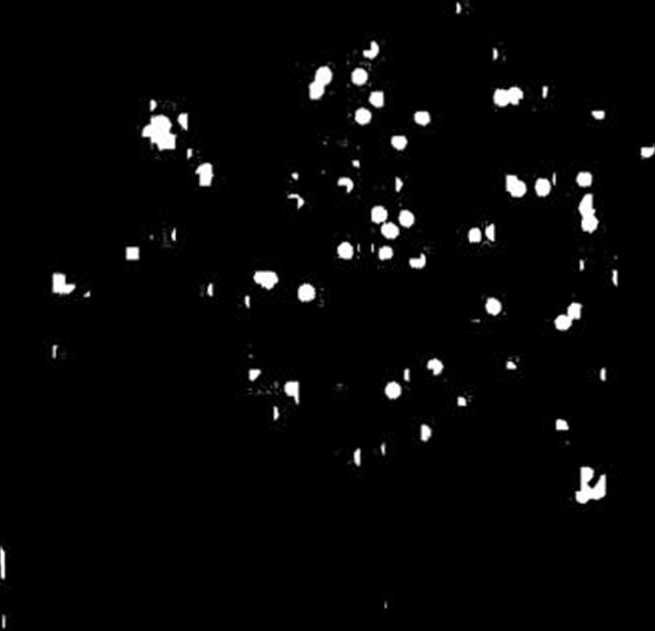372596244
63
RIKEN Accel. Próg. Rep. 24 (1990)
111-2-28. Development of Nuclear Track Microfilters
N. Nakanishi, S. Nakajima, and S. Wakasa1



Fig. 2. Scanning electron micrograph of etched pores in a 10 /im Makrofol irradiated by 1 MeV/u 84Kr8+ ions. Magnification x 10,000. Diameter is 0.2 /zm.
Energetic charged particles leave their latent tracks in a polymer, polycarbonate Makrofol, irradiated with them. Pierced pores can be observed in it after Chemical etching. The phenomenon is applicable to the production of microfilters for industrial uses.
The etch phenomenon is considered geometri-cally as shown in Fig. 1. In this simplified case, the surface A before etch is corroded to go to the surface B at a balk etching ratę Vb after an etching time T. On the other hand, as etching goes on, an etch pit is formed along the latent track at a track etching ratę Vt. Until docking, etch pits in both sides of the films proceed a the cone angle for which we can get a relation of 6=sin-1
It is desirable to get pores with 6 as smali as pos-sible.

Fig. 1. Schematic cross section of etch pits.
We have examined irradiating and etching condi-tions for thin polycarbonate Makrofol films.11 The present goals are to realize pores of less than 0.05 /i.m and to find the best conditions for polyimid films. Figurę 2 shows an example of etched pores in a 10 /rm film irradiated with 1 MeV/u ^Kr8"1". We have also tried to observe cross sections of etch pits.
i
I i
References
1) N. Nakanishi et al.: RIKEN Accel. Próg. Rep., 23, 88 (1989).
Japan Steel Work Ltd.
Wyszukiwarka
Podobne podstrony:
63 RIKEN Accel. Próg. Rep. 24 (1990)111-2-28. Development of Nuclear Track Microfilters N. Nakanishi
80 RIKEN Accel. Próg. Rep. 24 (1990)111-3-16. Development of an lon Beam Sputtering Method toPrepare
92 RIKEN Accel. Próg. Rep. 24 (1990)111-5. Instrumentation1. Design of a Microbeamline for a Compact
103 RIKEN Accel. Próg. Rep. 24 (1990)111-5-9. Test Experiment of the GARIS/IGISOL K. Morita, T. Nomu
116 RIKEN Accel. Próg. Rep. 24 (1990)111-5-19. Responses of Large Position-Sensitive Detectorsto Hea
11 RIKEN Accel. Próg. Rep. 24 (1990)111-1-2. Three a Disintegration of 12C in the Field of208Pb Nucl
72 RIKEN Accel. Próg. Rep. 24 (1990)111*3-8. Dry Separation of Radioactive Nuclides from a Gold Targ
94 RIKEN Accel. Próg. Rep. 24 (1990)111-5-2. Design of a Decay Muon Channel Using an Axially Symmetr
102 RIKEN Accel Próg. Rep. 24 (1990)111-5-8. Performance of Isotopic Separation in RIPS T.Nakamura,
105 RIKEN Accel. Próg. Rep. 24 (1990)111-5-10. Velocity Distribution of IGISOL lon Beams M. Koizumi,
108 RIKEN Accel. Próg. Rep. 24 (1990)111-5-12. Status Report of the RIKEN Swinger-Magnetic Analyzer
110 RIKEN Accel. Próg. Rep. 24 (1990)111-5-14. Test for Dispersive-Mode Beam Transportto the SMART
RIKEN Accel. Próg. Rep. 24 (1990)111-5-25. High Speed Serial Data Link for PC-9801 J. Fujita > PC
więcej podobnych podstron